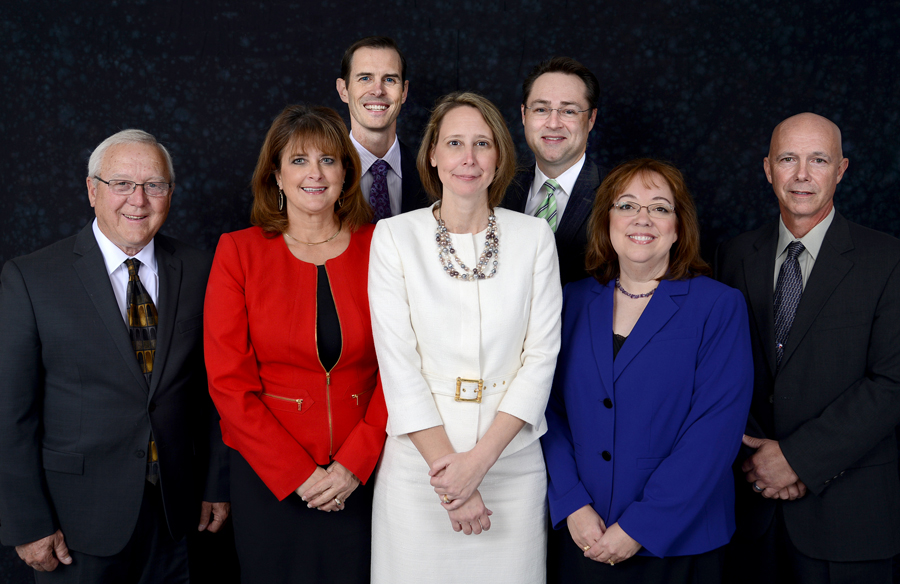In an effort to provide transparency and clarification regarding the most recent financial transaction of the Leander ISD Board of Trustees, the office of the Chief Financial Officer has prepared the following summary. Supporting documents and materials can always be found on the LISD website under Financial Transparency.
At the Aug. 25 Board meeting, the LISD Board of Trustees voted to maintain the current tax rate of $1.51187 – a Maintenance & Operations rate of $1.04 and an Interest & Sinking rate of $0.47187 – holding steady at this rate for the fifth-straight year. The tax rate will support the $422,254,319 budget adopted at the same Board meeting.
The Board thoroughly reviewed all options during several public meetings leading up to the Aug. 25 meeting. The administration shared information on anticipated funding for the 2016-17 year. Despite nearly 1,100 new students and double-digit property value growth, LISD’s revenue line will not change for 2016-17.
Dialogue commenced when the Board reviewed the total revenue per student numbers. LISD received $8,010 per student in 2015-16, but the state funding system will only provide $7,765 per student in 2016-17 – a decrease of $245 per student. Chief Financial Officer Lucas Janda stated at the public hearing, “It is difficult for school boards to provide tax relief when the largest tax rate [maintenance and operations] is essentially fixed, and the antiquated funding formulas keep our pot of money the same, despite 1,084 new students and the double-digit property growth our citizens are feeling when they pay their tax bills.”
For clarification purposes, it is important to note that the tax rate has two components – maintenance and operations as well as an interest and sinking. The interest and sinking tax rate funds debt service payments related to voter-authorized bonds.
Several years ago, the Board began utilizing a 10-year planning document to promote long-range planning related to funding new facilities, providing the lowest cost of borrowing, and managing the tax rate – all of which is coupled with conservative assumptions for variables such as property values, interest rates, inflation of construction costs, etc. Balancing all of these factors and variables is an ongoing challenge, yet one the Board is committed to.
The Board went on to discuss that with no changes to the debt service schedule, a 37-cent I&S tax rate would satisfy the 2016-17 bond payment. Several pluses and deltas exist with this rate – and all I&S tax rates – and the word capacity became a key factor in their discussions. At 13 cents below the state 50-cent cap [to issue new money], LISD has significant capacity to meet future capital needs. However, the Board felt the unexpected double-digit property value growth for the third-straight year could be an opportunity to continue strong financial management strategies and lower the total cost of borrowing.
From 2010 to 2014, like most of the state and country, LISD experienced a recession with less than modest property growth during that time. Capital appreciation bonds (CABs) were utilized during this uncertain economic time to give the tax base an opportunity to mature. With a couple years of significant property growth, the Board utilized local control to direct administration to pursue a refunding opportunity in 2015 to convert as many CABs as possible over to current interest bonds (CIBs). This transaction has proven to be beneficial for LISD and the growth-management strategy.
After the 2015 refunding, LISD was able to reduce the CAB percentage from 77 down to 68, and this action resulted in more than $100 million in savings to future taxpayers. With additional property growth in the year thereafter, the Board again directed LISD’s administration to explore reducing CAB debt. This became a challenge due to some language in a bill, supported by LISD, intended to limit the issuance of new-money CABs for those school districts that have CABs comprising more than 25 percent of their debt portfolios.
A refinancing, or refunding as it is often called, was ultimately approved by the state, and LISD anticipates pricing this transaction in early October. Current estimates include $325 million in debt savings, and a reduction in the CAB percentage to just less than 50. This bold local choice will lead to less short-term capacity – as the I&S rate now needed for 2016-17 would be closer to 42 cents – but will result in more long-term debt capacity and less volatility in future tax rates.
Charging an I&S tax rate of $0.47187 is not due to a financial hardship or for the myth of not being able to able to pay our debt. The I&S rate is an initiative by the Board to simply retire debt early. In fact, the conservative model used for long-term debt planning includes only 1-percent growth in the tax base each year for most of the future – and if the community calls for LISD to build campuses needed in the next 10 years, this can be done on top of the repayment of existing debt service.
The Board is focused on the overhaul repayment of all voter-authorized bonds, and not just CABs. For example, in 1999, the Board approved the issuance of bonds to construct Elementary #10 and meet other facility needs. With sizable property growth in the years shortly after selling the bonds, the Board approved a refunding in 2005 that resulted in paying off the bonds in six fewer years and avoiding more than 26 percent of the initially projected interest costs.
The I&S tax rate has been stable for five straight years, and LISD has leveraged excess tax collections to retire debt early and avoid the related interest costs. This strategy should result in a stable tax rate even if new money bonds are approved by our local stakeholders sometime in the future.
For additional information on any of the transactions referenced above, please visit Leander ISD’s Financial Transparency page.


